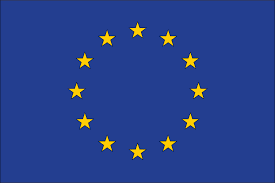Chemycal has been acquired by 3E
Learn MoreChemycal has been acquired by 3E
Learn MoreDiscover how Chemycal PRO helps you boosting your regulatory monitoring:

CELEX:52021DC0003: REPORT FROM THE COMMISSION TO THE EUROPEAN PARLIAMENT, THE COUNCIL, THE EUROPEAN ECONOMIC AND SOCIAL COMMITTEE AND THE COMMITTEE OF THE REGIONS THE SECOND CLEAN AIR OUTLOOK
Introduction
As mentioned in the European Green Deal 1 , creating a toxic-free environment requires more action to prevent pollution from being generated as well as measures to clean and remedy it. To protect Europe’s citizens and natural ecosystems, the EU needs to better monitor, report, prevent and remedy pollution in the air, water, soil and consumer products. This will also contribute to achieving the Sustainable Development Goals.
The EEA ‘Air quality in Europe - 2020 report' published in November 2020 shows that, although emissions of most air pollutants have declined in the EU in recent decades (see figure 1), air pollution continues to be a significant problem. Air pollution overall is responsible for about 400 000 premature deaths in the EU every year and for about two-thirds of ecosystem area in the EU being exposed to eutrophication 2 . Air pollution also entails considerable economic costs by inducing increased medical expenses, reduced productivity, for example through lost working days, and reduced agricultural yields.
The EU has been working for decades to improve air quality by controlling emissions of harmful substances into the atmosphere and by integrating environmental protection requirements into transport, industry, energy, agriculture and the building sector. The aim is to reduce air pollution to levels which minimise harmful effects on human health and the environment across the EU.
The EU’s approach to improving air quality rests on three pillars. The first pillar comprises the ambient air quality standards set out in the Ambient Air Quality Directives for ground-level ozone, particulate matter, nitrogen oxides, dangerous heavy metals and a number of other pollutants 3 . If the set limit values are exceeded, Member States are required to adopt air quality plans detailing measures to keep the exceedance period as short as possible.
The second pillar consists of national emission reduction obligations set by the National Emission reduction Commitments Directive (NEC Directive) 4 for the most important transboundary air pollutants: sulphur dioxides, nitrogen oxides, ammonia, non-methane volatile organic compounds and particulate matter. Member States had to develop national air pollution control programmes (NAPCPs) by 2019 presenting the measures they will put in place to comply with their emission reduction commitments.
The third pillar comprises emission standards for key sources of pollution, from vehicle and ship emissions to energy and industry. These standards are set out at EU level in dedicated legislation.
CONTINUE READING ON eur-lex.europa.eu
2013 © MyChemicalMonitoring. ALL Rights Reserved. About Us | Terms and Conditions